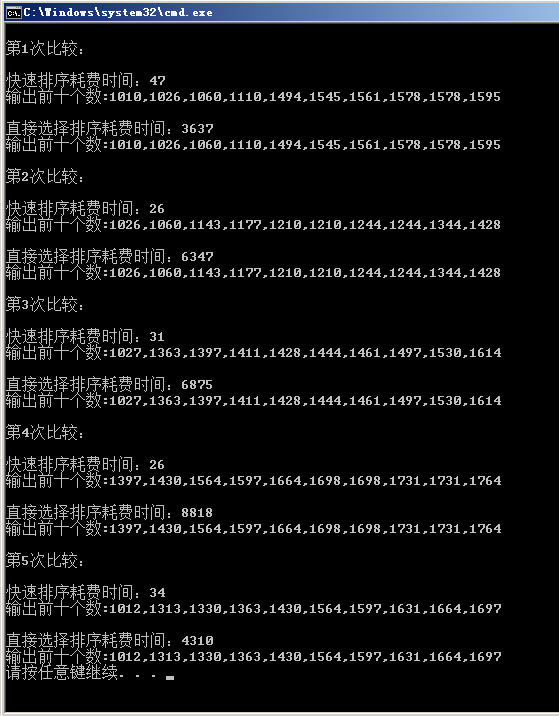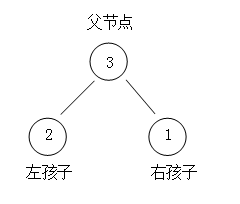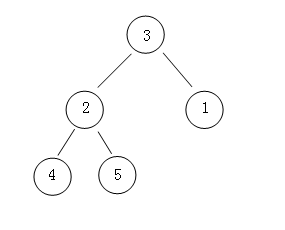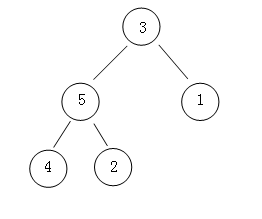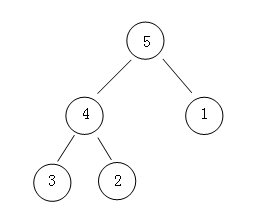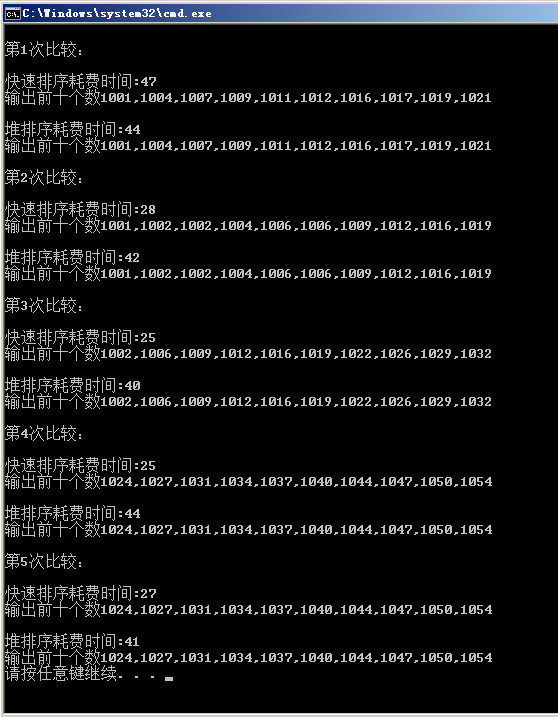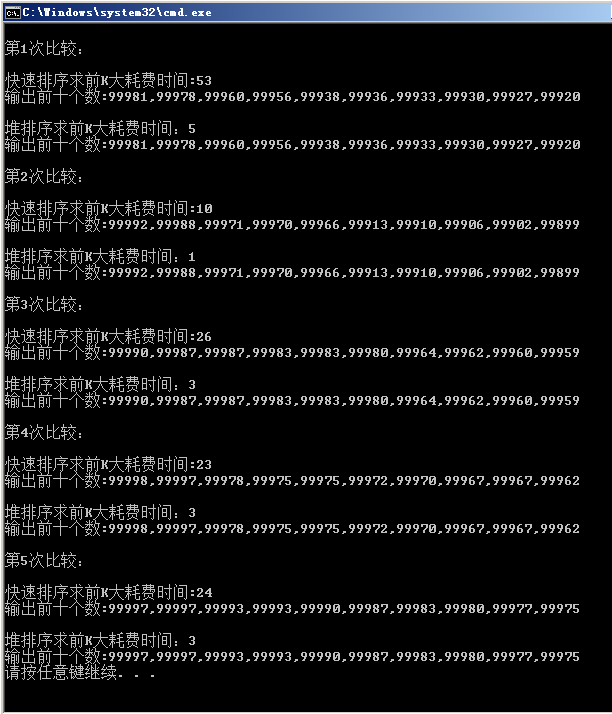首先感谢朋友们对第一篇文章的鼎力支持,感动中.......
今天说的是选择排序,包括“直接选择排序”和“堆排序”。
话说上次“冒泡排序”被快排虐了,而且“快排”赢得了内库的重用,众兄弟自然眼红,非要找快排一比高下。
这不今天就来了两兄弟找快排算账。
1.直接选择排序:
先上图:
说实话,直接选择排序最类似于人的本能思想,比如把大小不一的玩具让三岁小毛孩对大小排个序,
那小孩首先会在这么多玩具中找到最小的放在第一位,然后找到次小的放在第二位,以此类推。。。。。。

对的,小孩子给我们上了一课,
第一步: 我们拿80作为参照物(base),在80后面找到一个最小数20,然后将80跟20交换。
第二步: 第一位数已经是最小数字了,然后我们推进一步在30后面找一位最小数,发现自己最小,不用交换。
第三步:........
最后我们排序完毕。大功告成。
既然是来挑战的,那就5局3胜制。
1 using System;
2 using System.Collections.Generic;
3 using System.Linq;
4 using System.Text;
5 using System.Threading;
6 using System.Diagnostics;
7
8 namespace SelectionSort
9 {
10 public class Program
11 {
12 static void Main(string[] args)
13 {
14 //5次比较
15 for (int i = 1; i <= 5; i++)
16 {
17 List<int> list = new List<int>();
18
19 //插入2w个随机数到数组中
20 for (int j = 0; j < 20000; j++)
21 {
22 Thread.Sleep(1);
23 list.Add(new Random((int)DateTime.Now.Ticks).Next(1000, 1000000));
24 }
25
26 Console.WriteLine("\n第" + i + "次比较:");
27
28 Stopwatch watch = new Stopwatch();
29
30 watch.Start();
31 var result = list.OrderBy(single => single).ToList();
32 watch.Stop();
33
34 Console.WriteLine("\n快速排序耗费时间:" + watch.ElapsedMilliseconds);
35 Console.WriteLine("输出前十个数:" + string.Join(",", result.Take(10).ToList()));
36
37 watch.Start();
38 result = SelectionSort(list);
39 watch.Stop();
40
41 Console.WriteLine("\n直接选择排序耗费时间:" + watch.ElapsedMilliseconds);
42 Console.WriteLine("输出前十个数:" + string.Join(",", list.Take(10).ToList()));
43
44 }
45 }
46
47 //选择排序
48 static List<int> SelectionSort(List<int> list)
49 {
50 //要遍历的次数
51 for (int i = 0; i < list.Count - 1; i++)
52 {
53 //假设tempIndex的下标的值最小
54 int tempIndex = i;
55
56 for (int j = i + 1; j < list.Count; j++)
57 {
58 //如果tempIndex下标的值大于j下标的值,则记录较小值下标j
59 if (list[tempIndex] > list[j])
60 tempIndex = j;
61 }
62
63 //最后将假想最小值跟真的最小值进行交换
64 var tempData = list[tempIndex];
65 list[tempIndex] = list[i];
66 list[i] = tempData;
67 }
68 return list;
69 }
70 }
71 }比赛结果公布:
堆排序:
要知道堆排序,首先要了解一下二叉树的模型。
下图就是一颗二叉树,具体的情况我后续会分享的。
那么堆排序中有两种情况(看上图理解):
大根堆: 就是说父节点要比左右孩子都要大。
小根堆: 就是说父节点要比左右孩子都要小。
那么要实现堆排序,必须要做两件事情:
第一:构建大根堆。
首先上图:
首先这是一个无序的堆,那么我们怎样才能构建大根堆呢?
第一步: 首先我们发现,这个堆中有2个父节点(2,,3);
第二步: 比较2这个父节点的两个孩子(4,5),发现5大。
第三步: 然后将较大的右孩子(5)跟父节点(2)进行交换,至此3的左孩子堆构建完毕,
如图:
第四步: 比较第二个父节点(3)下面的左右孩子(5,1),发现左孩子5大。
第五步: 然后父节点(3)与左孩子(5)进行交换,注意,交换后,堆可能会遭到破坏,
必须按照以上的步骤一,步骤二,步骤三进行重新构造堆。
最后构造的堆如下:
第二:输出大根堆。
至此,我们把大根堆构造出来了,那怎么输出呢?我们做大根堆的目的就是要找出最大值,
那么我们将堆顶(5)与堆尾(2)进行交换,然后将(5)剔除根堆,由于堆顶现在是(2),
所以破坏了根堆,必须重新构造,构造完之后又会出现最大值,再次交换和剔除,最后也就是俺们
要的效果了,
发现自己兄弟被别人狂殴,
同样,快排也不甘示弱,谁怕谁?
1 using System;
2 using System.Collections.Generic;
3 using System.Linq;
4 using System.Text;
5 using System.Threading;
6 using System.Diagnostics;
7
8 namespace HeapSort
9 {
10 public class Program
11 {
12 static void Main(string[] args)
13 {
14 //5次比较
15 for (int j = 1; j <= 5; j++)
16 {
17 List<int> list = new List<int>();
18
19 //插入2w个数字
20 for (int i = 0; i < 20000; i++)
21 {
22 Thread.Sleep(1);
23 list.Add(new Random((int)DateTime.Now.Ticks).Next(1000, 100000));
24 }
25
26 Console.WriteLine("\n第" + j + "次比较:");
27
28 Stopwatch watch = new Stopwatch();
29 watch.Start();
30 var result = list.OrderBy(single => single).ToList();
31 watch.Stop();
32 Console.WriteLine("\n快速排序耗费时间:" + watch.ElapsedMilliseconds);
33 Console.WriteLine("输出前十个数" + string.Join(",", result.Take(10).ToList()));
34
35 watch = new Stopwatch();
36 watch.Start();
37 HeapSort(list);
38 watch.Stop();
39 Console.WriteLine("\n堆排序耗费时间:" + watch.ElapsedMilliseconds);
40 Console.WriteLine("输出前十个数" + string.Join(",", list.Take(10).ToList()));
41 }
42
43 }
44
45 ///<summary>
46 /// 构建堆
47 ///</summary>
48 ///<param name="list">待排序的集合</param>
49 ///<param name="parent">父节点</param>
50 ///<param name="length">输出根堆时剔除最大值使用</param>
51 static void HeapAdjust(List<int> list, int parent, int length)
52 {
53 //temp保存当前父节点
54 int temp = list[parent];
55
56 //得到左孩子(这可是二叉树的定义,大家看图也可知道)
57 int child = 2 * parent + 1;
58
59 while (child < length)
60 {
61 //如果parent有右孩子,则要判断左孩子是否小于右孩子
62 if (child + 1 < length && list[child] < list[child + 1])
63 child++;
64
65 //父亲节点大于子节点,就不用做交换
66 if (temp >= list[child])
67 break;
68
69 //将较大子节点的值赋给父亲节点
70 list[parent] = list[child];
71
72 //然后将子节点做为父亲节点,已防止是否破坏根堆时重新构造
73 parent = child;
74
75 //找到该父亲节点较小的左孩子节点
76 child = 2 * parent + 1;
77 }
78 //最后将temp值赋给较大的子节点,以形成两值交换
79 list[parent] = temp;
80 }
81
82 ///<summary>
83 /// 堆排序
84 ///</summary>
85 ///<param name="list"></param>
86 public static void HeapSort(List<int> list)
87 {
88 //list.Count/2-1:就是堆中父节点的个数
89 for (int i = list.Count / 2 - 1; i >= 0; i--)
90 {
91 HeapAdjust(list, i, list.Count);
92 }
93
94 //最后输出堆元素
95 for (int i = list.Count - 1; i > 0; i--)
96 {
97 //堆顶与当前堆的第i个元素进行值对调
98 int temp = list[0];
99 list[0] = list[i];
100 list[i] = temp;
101
102 //因为两值交换,可能破坏根堆,所以必须重新构造
103 HeapAdjust(list, 0, i);
104 }
105 }
106 }
107 }结果公布:
堆排序此时心里很尴尬,双双被KO,心里想,一定要捞回面子,一定要赢,
于是堆排序提出了求“前K大问题”。(就是在海量数据中找出前几大的数据),
快排一口答应,小意思,没问题。
双方商定,在2w随机数中找出前10大的数:
1 using System;
2 using System.Collections.Generic;
3 using System.Linq;
4 using System.Text;
5 using System.Threading;
6 using System.Diagnostics;
7
8 namespace QuickSort
9 {
10 public class Program
11 {
12 static void Main(string[] args)
13 {
14 //5此比较
15 for (int j = 1; j <= 5; j++)
16 {
17 List<int> list = new List<int>();
18
19 for (int i = 0; i < 20000; i++)
20 {
21 Thread.Sleep(1);
22 list.Add(new Random((int)DateTime.Now.Ticks).Next(1000, 100000));
23 }
24
25 Console.WriteLine("\n第" + j + "次比较:");
26
27 Stopwatch watch = new Stopwatch();
28 watch.Start();
29 var result = list.OrderByDescending(single => single).Take(10).ToList();
30 watch.Stop();
31 Console.WriteLine("\n快速排序求前K大耗费时间:" + watch.ElapsedMilliseconds);
32 Console.WriteLine("输出前十个数:" + string.Join(",", result.Take(10).ToList()));
33
34 watch = new Stopwatch();
35 watch.Start();
36 result = HeapSort(list, 10);
37 watch.Stop();
38 Console.WriteLine("\n堆排序求前K大耗费时间:" + watch.ElapsedMilliseconds);
39 Console.WriteLine("输出前十个数:" + string.Join(",", list.Take(10).ToList()));
40 }
41
42 }
43
44 ///<summary>
45 /// 构建堆
46 ///</summary>
47 ///<param name="list">待排序的集合</param>
48 ///<param name="parent">父节点</param>
49 ///<param name="length">输出根堆时剔除最大值使用</param>
50 static void HeapAdjust(List<int> list, int parent, int length)
51 {
52 //temp保存当前父节点
53 int temp = list[parent];
54
55 //得到左孩子(这可是二叉树的定义哇)
56 int child = 2 * parent + 1;
57
58 while (child < length)
59 {
60 //如果parent有右孩子,则要判断左孩子是否小于右孩子
61 if (child + 1 < length && list[child] < list[child + 1])
62 child++;
63
64 //父节点大于子节点,不用做交换
65 if (temp >= list[child])
66 break;
67
68 //将较大子节点的值赋给父亲节点
69 list[parent] = list[child];
70
71 //然后将子节点做为父亲节点,已防止是否破坏根堆时重新构造
72 parent = child;
73
74 //找到该父节点左孩子节点
75 child = 2 * parent + 1;
76 }
77 //最后将temp值赋给较大的子节点,以形成两值交换
78 list[parent] = temp;
79 }
80
81 ///<summary>
82 /// 堆排序
83 ///</summary>
84 ///<param name="list">待排序的集合</param>
85 ///<param name="top">前K大</param>
86 ///<returns></returns>
87 public static List<int> HeapSort(List<int> list, int top)
88 {
89 List<int> topNode = new List<int>();
90
91 //list.Count/2-1:就是堆中非叶子节点的个数
92 for (int i = list.Count / 2 - 1; i >= 0; i--)
93 {
94 HeapAdjust(list, i, list.Count);
95 }
96
97 //最后输出堆元素(求前K大)
98 for (int i = list.Count - 1; i >= list.Count - top; i--)
99 {
100 //堆顶与当前堆的第i个元素进行值对调
101 int temp = list[0];
102 list[0] = list[i];
103 list[i] = temp;
104
105 //最大值加入集合
106 topNode.Add(temp);
107
108 //因为顺序被打乱,必须重新构造堆
109 HeapAdjust(list, 0, i);
110 }
111 return topNode;
112 }
113 }
114 }求前K大的输出结果:
最后堆排序赶紧拉着直接选择排序一路小跑了,因为求前K大问题已经不是他原本来的目的。
ps: 直接选择排序的时间复杂度为:O(n^2)
堆排序的时间复杂度:O(NlogN)
共同学习,写下你的评论
评论加载中...
作者其他优质文章






